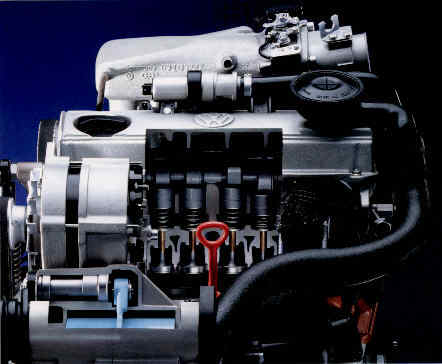
|
|
|
Why bother? Why not turbocharge? What did VW choose? [inc. photo] How does it work? [inc. photo] What goes wrong? |
 |
|
ok ok so I know smart arse VW solved this problem by having a staggered V6 engine but it still puts a lot of weight over the front axle. |
| When you look at your Mk1 or Mk2 golf the engine is set far back in the engine bay this aids turn in. |
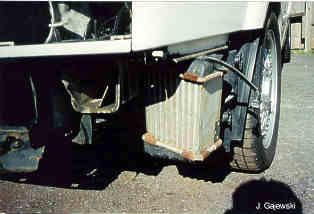 Here is a photo of a Corrado intercooler. Note how small it is....er and how its stuffed down in front of the nearside front wheel. G60 Rallye golfs have an intercooler in tandem with the radiator full width. They say that the Rallye will make more power than the Corrado chipped and pullied as it has this larger intercooler. Here is a photo of a Corrado intercooler. Note how small it is....er and how its stuffed down in front of the nearside front wheel. G60 Rallye golfs have an intercooler in tandem with the radiator full width. They say that the Rallye will make more power than the Corrado chipped and pullied as it has this larger intercooler. |
|
How does it work? |
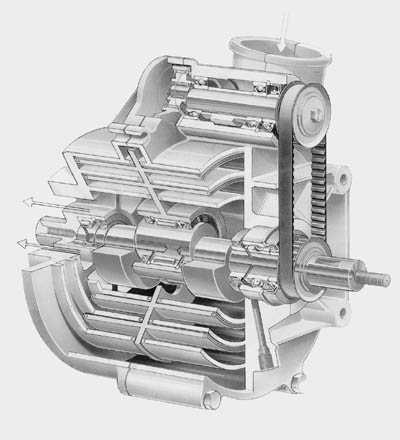 |
|
Study the three photos....ok.....looking at the pencil drawing above...the main drive from the crankshaft drives the centre shaft. This drive also drives through a timing belt a secondary shaft. This wobbles the magnesium rotor in a figure of 8. This pumps through the air in a way similar to a 'wankel rotary' engine. From here it is sent to the intercooler because the affect on compression is to raise the temperature of the gas.[Pv=nRT]. Pressure x Volume=constant x Temperature. The intercooler sends the charge to the throttle but at this point there is a bypass pipe. There is a valve which works inversely to the throttle. So when cruising all the air is sent to the secondary chamber of the supercharger nulling its affect, thus giving a better fuel consumption. When the throttle is pressed hard the valve shuts allowing full boost to the chambers. |
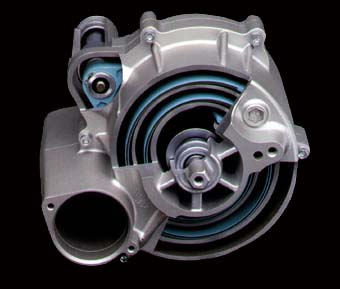 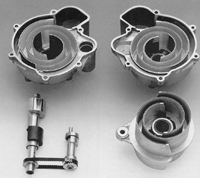 |
|
What goes wrong? |
|
Well the timing belt could snap.....big damage but quite rare. A large particle is sucked in through a leak in the air filter or pipe....if it is larger than 0.5mm then it will bridge the gap between the rotor and housing.... More likely and most common as the rotor turns exactly the same rotation [figure 8] the seals slowly make grooves in the housing walls....eventually the seals snag in the grooves and pop out and get squashed between rotor and housing..... All very very expensive!!! |